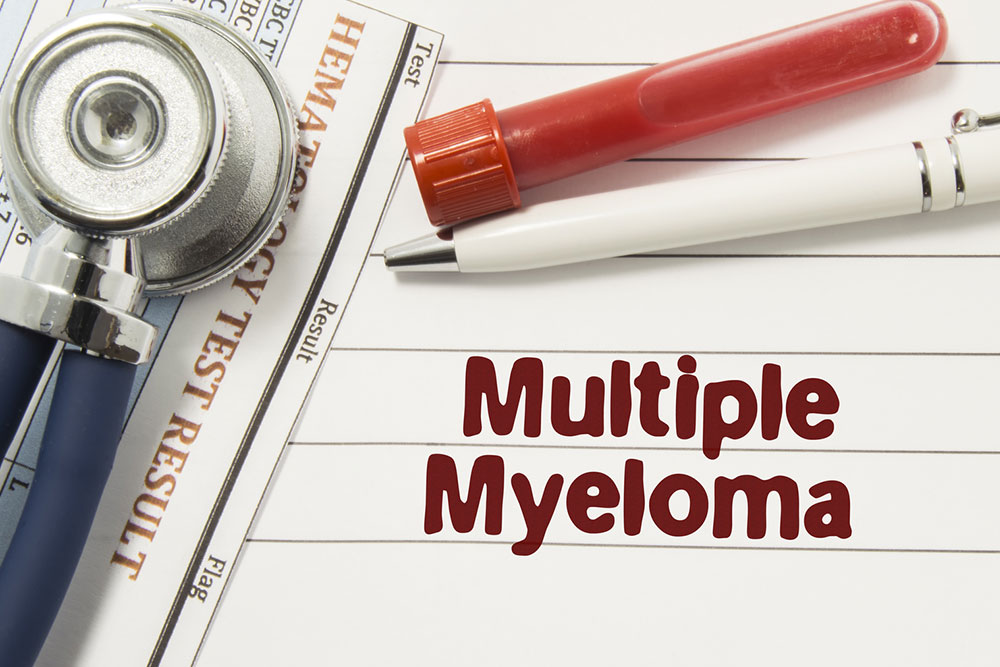
Treatment Options for Multiple Myeloma
Staging describes the location of cancer, where it has spread, and if it has started affecting other body parts. While doctors have a treatment plan in place according to its stage, there are a few natural treatments one can try as well.
What is multiple myeloma?
Multiple myelomas are a type of blood cancer affecting the bone marrow. The plasma cells become cancerous and form a tumor within the bone which is malignant. When multiple tumors are formed, it is called multiple myeloma.
Traditional multiple myeloma treatments include chemotherapy, bisphosphonates, surgery, radiation, and stem cell transplants. Multiple myeloma natural treatments can be given to the patient along with regular treatment. These treatments include a special diet, herbs, vitamins, massages, and acupuncture.
1. Multiple myeloma treatments
- Targeted therapy
Drugs are targeted at specific abnormalities in cancer cells which help them thrive. - Chemotherapy
Chemotherapy kills fast-growing cancer cells, which include myeloma cells. These drugs are given either orally or intravenously. - Biological therapy
Drugs are used to trigger the immune system to combat myeloma cells. These medications are taken orally. - Corticosteroids
These drugs regulate the immune system so that it controls inflammation. They work actively against myeloma cells. - Radiation therapy
Radiation uses a high beam of energy, such as protons and x-rays, to kill myeloma cells and prevent growth. It may be used to shrink myeloma cells in a particular location. - Bone marrow transplant
The procedure involves replacing the diseased bone marrow with healthy bone marrow.
2. Stage-by-stage myeloma treatment
- Stage 1 solitary plasmacytoma
Normally, radiation therapy is sufficient to treat the first stage of multiple myeloma. If the bone is not affected, the plasma cell tumor can be removed with surgery. Chemotherapy may be needed when multiple myeloma develops. - Stage 2 Smoldering multiple myeloma
Patients lead a normal life without any treatment for years. For most patients, starting early treatment does not contribute to an increased lifespan. Doctors watch these patients closely without chemotherapy or any other treatment. Some patients may have an increased risk of developing progressive to active multiple myeloma. In such cases, advanced treatment may be needed. - Stage 3 Symptomatic (active) myeloma
Patients with advanced active myeloma are given a combination of drugs. Depending on the patient’s health, kidney function, or a planned stem cell transplant, doctors give the necessary medications.
3. Natural treatments
Although there are no proven diets for multiple myeloma, some specific nutrition strategies may be used as a natural treatment for common signs and symptoms, such as anemia and kidney damage.
For example, patients with anemia should have a diet rich in iron, folate, vitamin B12, and vitamin D.
However, patients with kidney damage should avoid foods rich in phosphorus (whole-grain bread, bran cereals, oats, nuts, and sunflower seeds) and potassium (avocadoes, bananas, spinach, citrus fruits, tomatoes).
Discuss any dietary changes with your doctor, as they can advise you about the dos and don’ts.
4. Alternative medicine
Although no alternative medicine has treated multiple myeloma successfully, it helps patients cope with stress. Here are the options:
- Art therapy
- Exercise
- Music therapy
- Meditation
- Relaxation exercises
Consult a doctor before trying these techniques to ensure they don’t pose risks.



